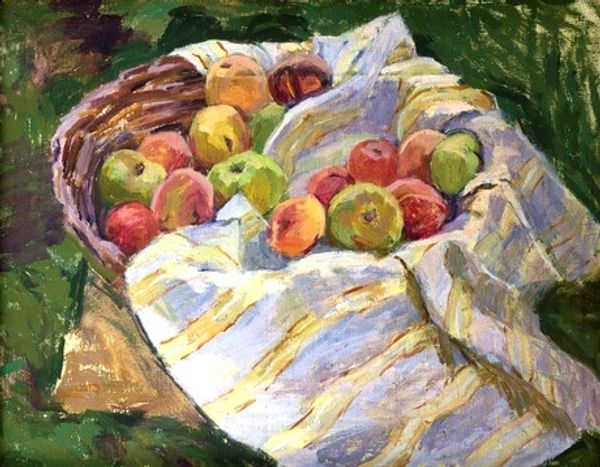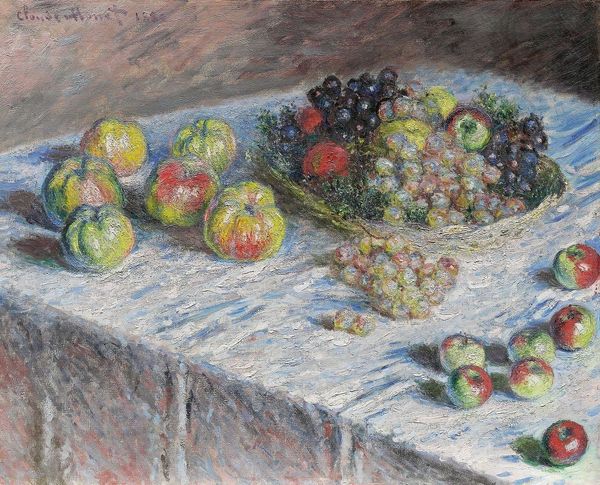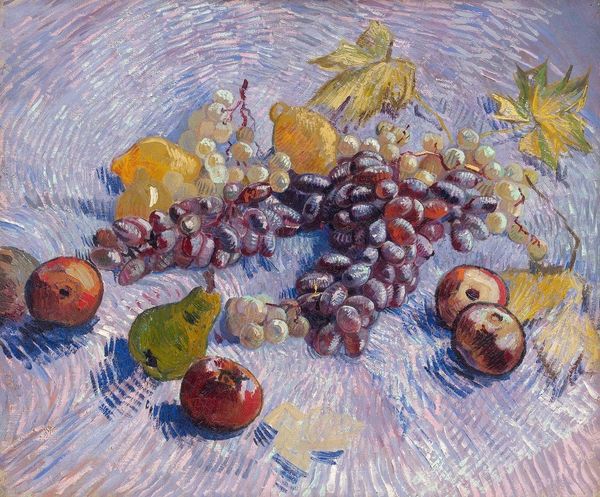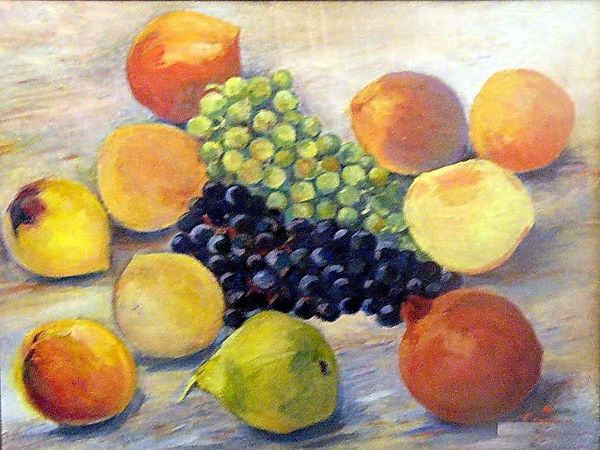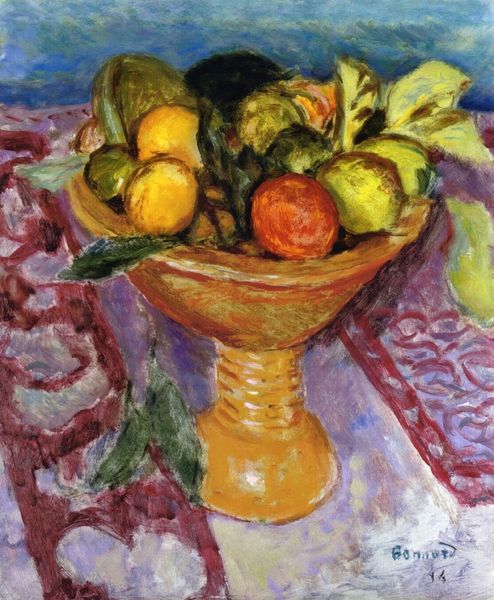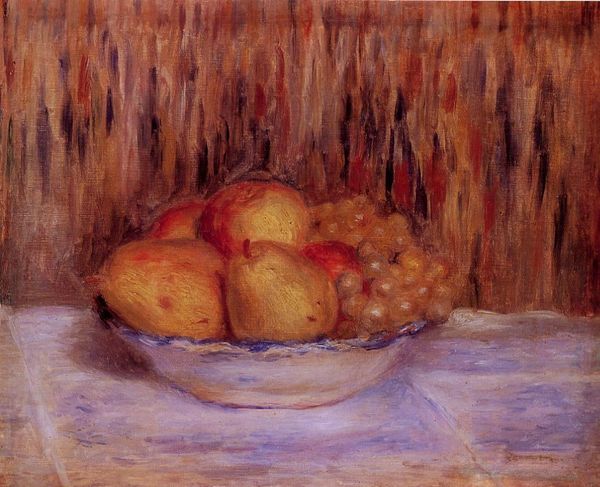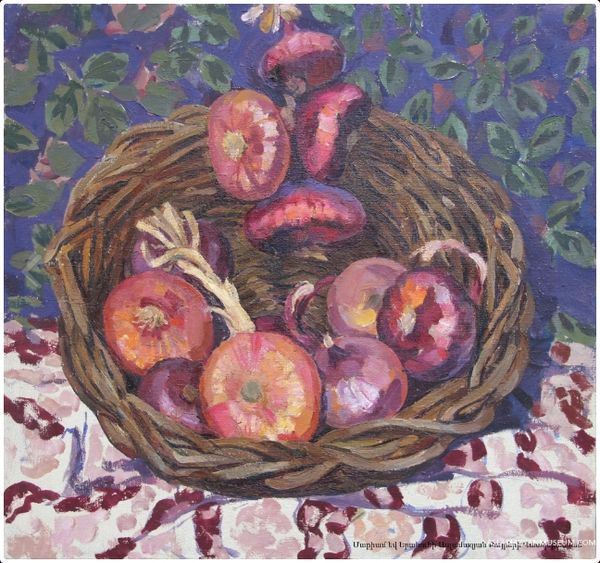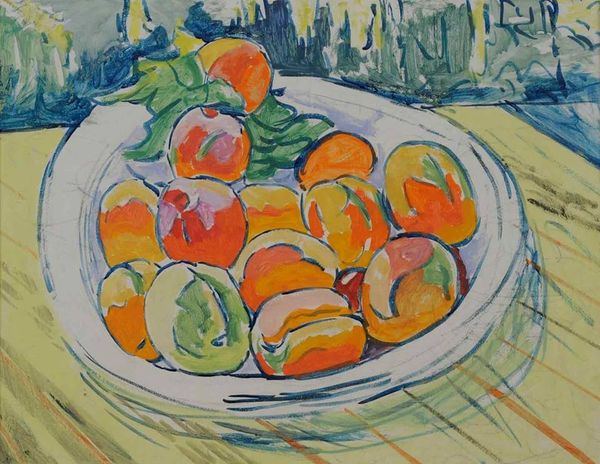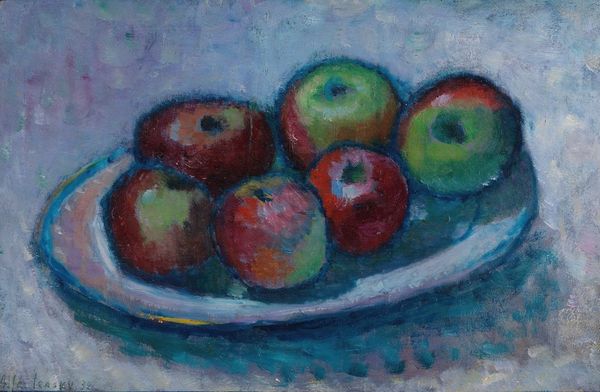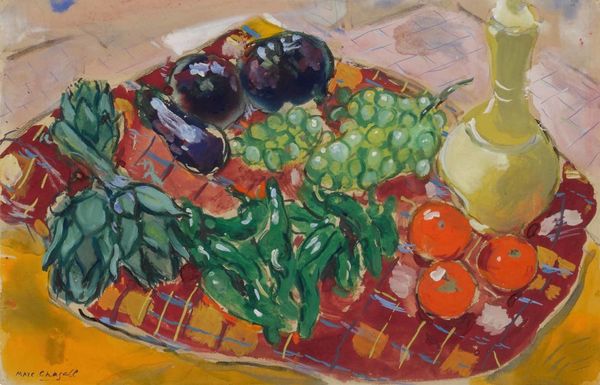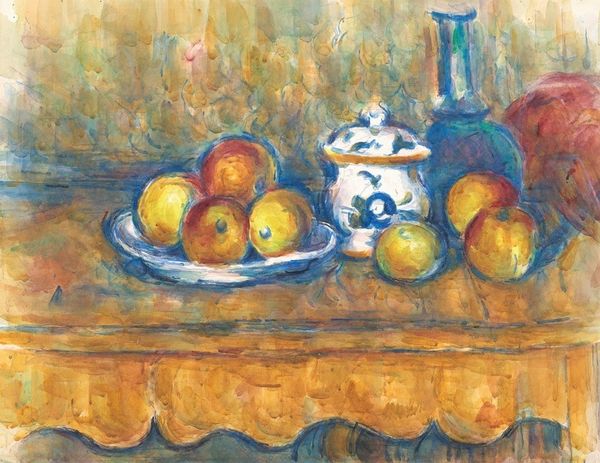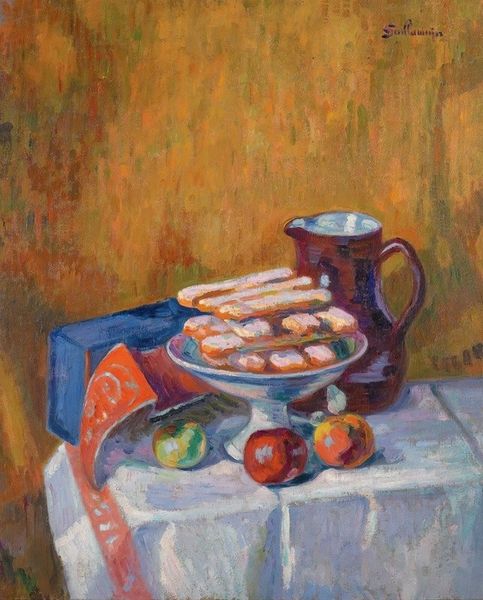
oil-paint
#
impressionism
#
oil-paint
#
oil painting
#
fruit
Copyright: Public domain
Curator: Claude Monet's "Basket of Grapes, Quinces, and Pears," painted in 1885, offers a curious divergence from his landscape work. Editor: Yes, at first glance it strikes me as wonderfully subdued, a quiet study in ochres and muted greens compared to his typical vibrant outdoor scenes. Curator: Note the layering of colours and brushstrokes. Observe the juxtaposition of hard and soft forms: the textured basket against the smooth fruit. Monet seems particularly interested in exploring form through light and color here. It also speaks to Post-Structuralism, because we can decode that there is meaning of how the artist decided to convey fruit. Editor: Indeed. It’s hard to miss the symbolism, or lack thereof. Was Monet consciously positioning himself within the bourgeois values of the late 19th century by portraying commonplace, consumable objects like fruit, which were becoming more attainable to the common people? Or did he even realize that he would make a fruit portrait and be recognized as impressionist? Curator: Perhaps. We shouldn’t presume a direct reflection. Still life as a genre carries with it connotations of prosperity and domestic stability. Monet might be engaging in a visual commentary on the role of art within middle class social sphere. How could Monet decide on his visual rhetoric on his painting, because not much context of fruit painting had been seen during that era. Editor: I see. I had to understand more about his place, because France started to grow a different kind of grapes and fruit was used as still-life and decoration to some social elites at the time. The colors he employs contribute to a harmonious scene, where the material culture is placed in high standing at a table for social gatherings. Curator: In viewing such objects, we gain insights into what it represented about consumerism. Now, I believe I am keen to consider a second look after hearing your perspective. It challenges my singular formal understanding of composition. Editor: Likewise, considering its presence at art exhibitions can enhance historical meaning to art making practices today.
Comments
No comments
Be the first to comment and join the conversation on the ultimate creative platform.
